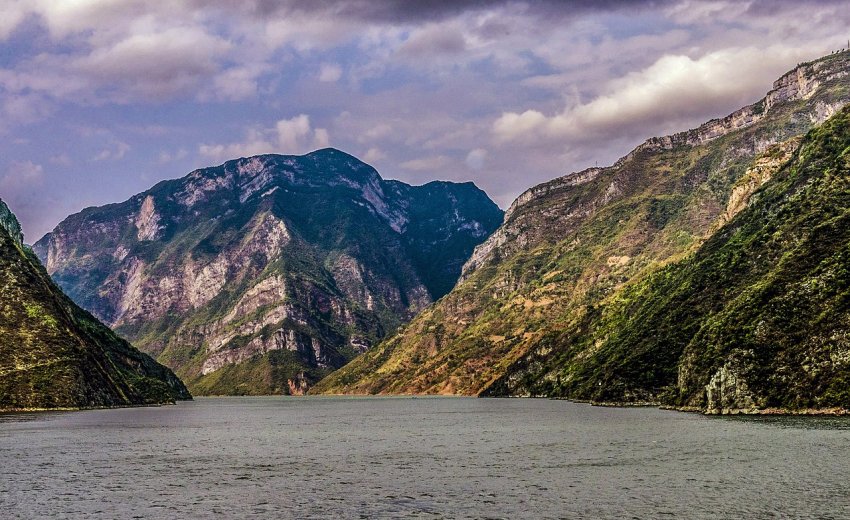India’s Army Border Clash with China’s People Liberation Army
A 45-minute clash between Indian and Chinese armies took place over a border dispute near Yangtze on Dec 9, 2022.
Line of Actual Control
A 2,100 mile-long (3,379-kilometer) Line of Actual Control (LAC) spanning Arunachal Pradesh, Himachal Pradesh, Sikkim, Uttarakhand, Jammu & Kashmir separates the territories of India and China. The high elevation of rugged mountainous terrain in certain regions of the LAC has prevented the entire border from being clearly marked resulting in disputed areas, that reach as high as 17,000 feet (5,862 meters) above sea level, where temperatures plummet to 22 degrees below zero F (-30 C) during the winter months.
The LAC runs along three sectors of India. The western sector runs along Ladakh, the central sector runs along Himachal Pradesh and Uttarakhand, and the eastern sector suns along Sikkim and Arunachal Pradesh. The dispute occurred in the Tawang Sector of Arunachal Pradesh. China claims that this northeastern section of India is a part of Southern Tibet. China gaining control of Arunachal Pradesh, would mean that Beijing would surround Bhutan, thereby isolating India’s north eastern states from the rest of the country.
History of Conflict
A border war between Chain and India took place in 1962. India set up a post in 2014 along the McMahon Line near Yangtze. A frontier battle June 15, 2020 took the lives of 20 Indian military personnel and no fewer than 4 Chinese combatants. Since then, 16 episodes of negotiations have diffused confrontations over the contested areas of LAC, including incidents in September and November of 2022. There are numerous confrontations occurring every year
December 9, 2022 Border Clash
Between 200 and 300 Chinese soldiers of the Peoples Liberation Army, (PLA) armed with drones, taser guns, spiked clubs, and other crude weapons attempted to storm a stone barricade marking the LAC in the Tawang Sector of India on Friday, December 9, 2022. About 50 Indian soldiers patrolling the LAC received reinforcement from back up squads. Altogether three battalions joined the resisting troops including Jammu and Kashmir Rifles, Jat Regiment, and Sikh Light Infantry repelling the PLA assault using cudgels and staves to beat back the aggressors. Though Indian military aircraft patrolled the skies during the skirmish, both sides maintained long standing agreed protocols to avoid use of fire arms. After 45 minutes of vocal aggression, stone throwing, and hand-to-hand combat using wooden weapons, the PLA retreated. Indian troops suffered half a dozen minor injuries including one broken leg. Government officials concluded the incident with peaceful negotiations and both sides promising a policy of non-aggression.
Brief History of Sikh Light Infantry & Mazhabi Ramdasia Sikh Regiments
The Sikh Light Infantry (Sikh LI) so named in 1944 has a history reaching back to the 1675 martyrdom of Ninth Guru Teg Bahadar.
Origin of Mazhabi Sikh
When the Mughal executioner beheaded the Ninth Guru, Bhai Jaita, of the untouchable clan of Ranghar region residents, bravely dashed from the crowd of onlookers and retrieved the Guru’s severed head, hiding it in quickly in a basket. Bhai Jaita along with two trusted friends, Bhai Nanu and Bhai Bagha, carried the head to Guru Bahadar’s nine-year-old son, Tenth Guru Gobind Singh in Anandpur. Another family managed to retrieve the ninth Guru’s body on a cart, carry it to their house and secretly cremate it by burning down their house to cover their deed. When Bhai Jaiata arrived in Anandpur, Guru Gobind Singh cremated his father’s head and proclaimed, “Ranghareta Guru Ka Beta” meaning, “These residents of Ranghar are the Guru’s own sons.” In doing so the Guru elevated the status of the former untouchables to one that was equal to his own. He declared they should be known as the Mazhabi or “faithful.” Guru ji then appointed Bhai Jaita to be the first official beater of a large kettle, which is paraded through the streets. In April of 1699, when Bhai Jaita received initiation as a spiritual warrior drinking the immortal nectar Amrit, his name became Bhai Jiwan, meaning life. He fought beside the Guru in a series of battles until achieving martyrdom during the treacherous evacuation of Anandpur.
Mazhabi Sikh Pioneers
The Mazhabi Sikhs continued on as warriors. The fought for Maharaja Ranjit Singh and engaged in battle as Pioneers in the army of Gulab Singh, then Maharaja of Jammu and Kashmir, and in 1857 accepted in the British regiments and employed as Sikh Pioneers, a labor regiment with military skills that constructed bridges, canals, and roads for the army. The Mazhabi temporarily disbanded in 1933, and in 1941 regrouped to merge with the Ramdasias into the Sikh Pioneers Corps. The Sikh Regiments fought alongside the British in both World Wars around in Egypt, Europe, Mesopotamia and Palestine earning a reputation for their endurance, loyalty and reliability.
Sikh Light Infantry
The British recruited the Mazhabi and Ramdasia Sikh Pioneers Corps in 1944 and renamed them the Sikh Light Infantry (SLI). After the 1948 partition and Independence of India, The Sikh Light Infantry became part of the Indian Army. The SLI have fought in all battles, conflicts, and wars throughout India that have involved the Indian military since.
The Sikh Light Infantry recruits principally from Himachal Pradesh, Punjab and Haryana states of India. Proof of identification as either Mazhabi or Ramdasi must be provided to join. The SLI regimental jakara, or motto is “Deg Tegh Fateh” meaning “prosperity in peace, victory in war”. Their battle cry is “Bole So Nihal Sat Siri Akal” meaning “Call out with delight, Great is the Undying Truth.” The regimental insignia is a Chakar and Kirpan, a circular throwing weapon with a cutting edge upon which a short, curved sword is mounted. The insignia is worn as a badge or on the front of the turban. Adherence to the Sikh principal of “Sant Siphai” Saint and Soldier is foremost. A regimental gurdwara is maintained with worship in the form of sacred hymns of Guru Granth Sahib and Ardas, the prayer of petition preformed before going into battle.
The Chief of Army Staff, General Bikram Singh, PVSM, UYSM, AVSM, SM, VSM, and ADC, is a Mazhabi Colonel of the Sikh Light Infantry Regiment.





